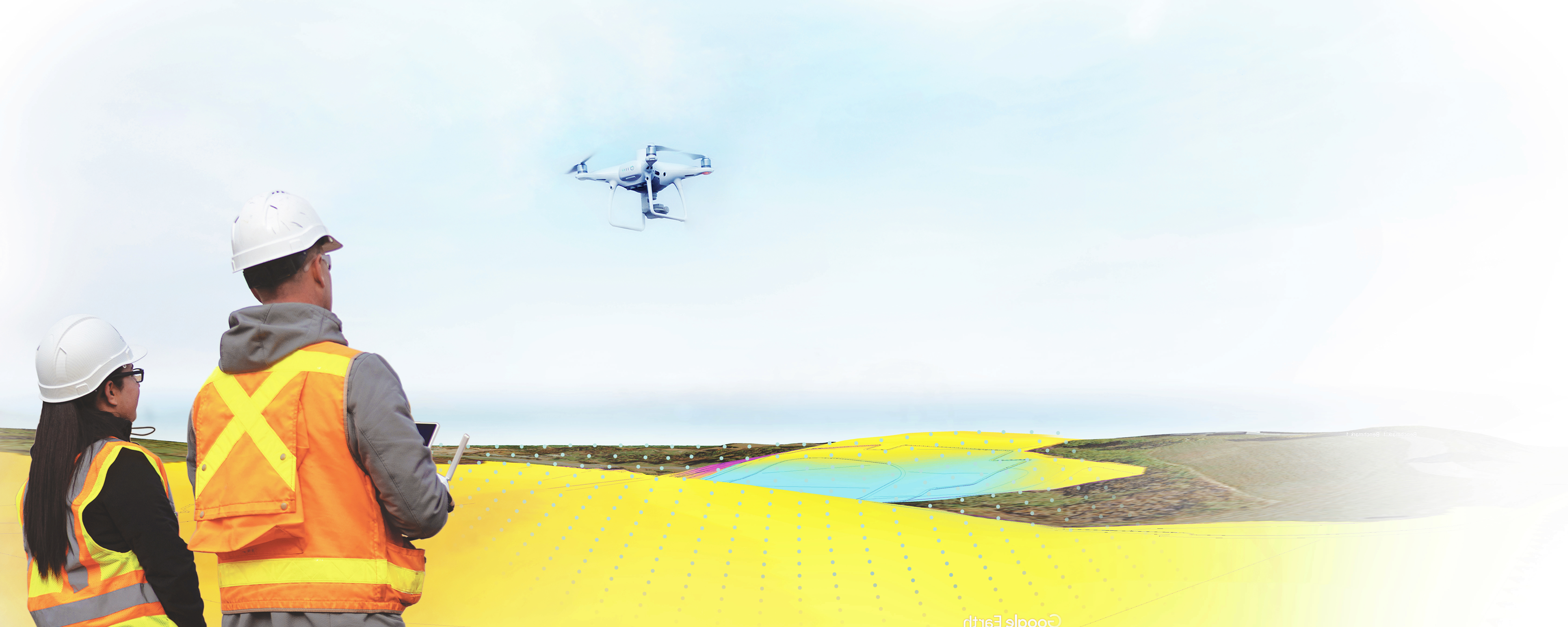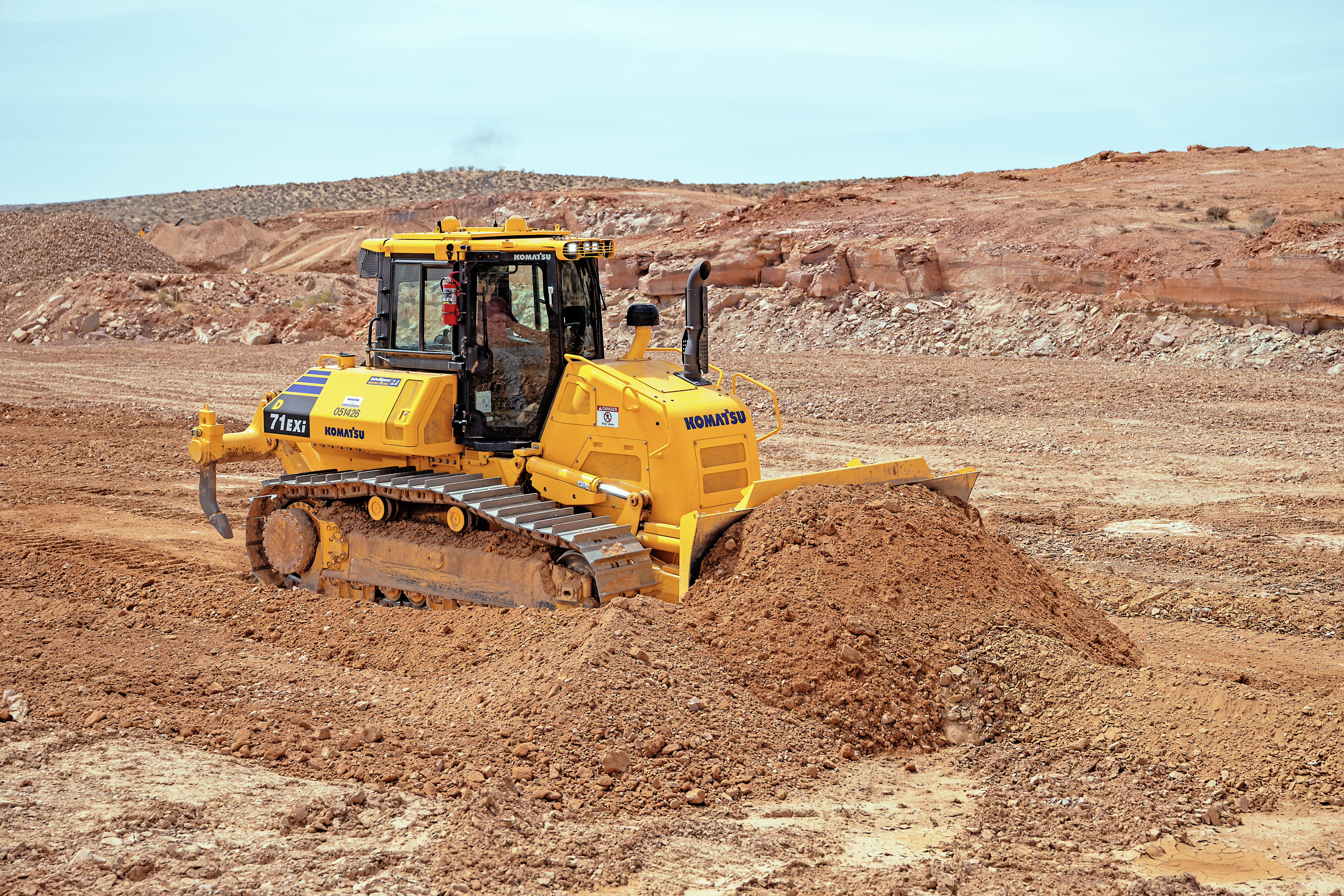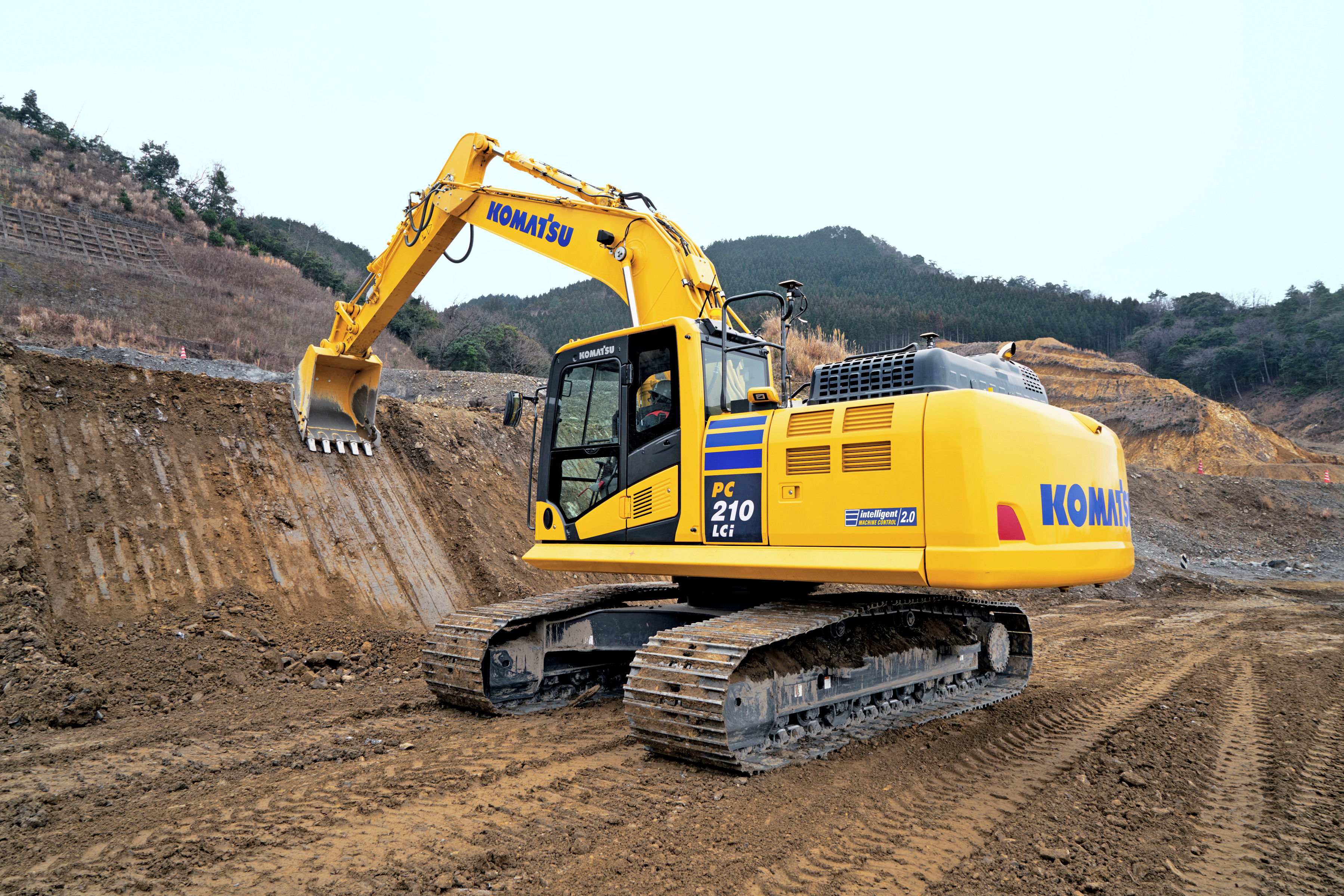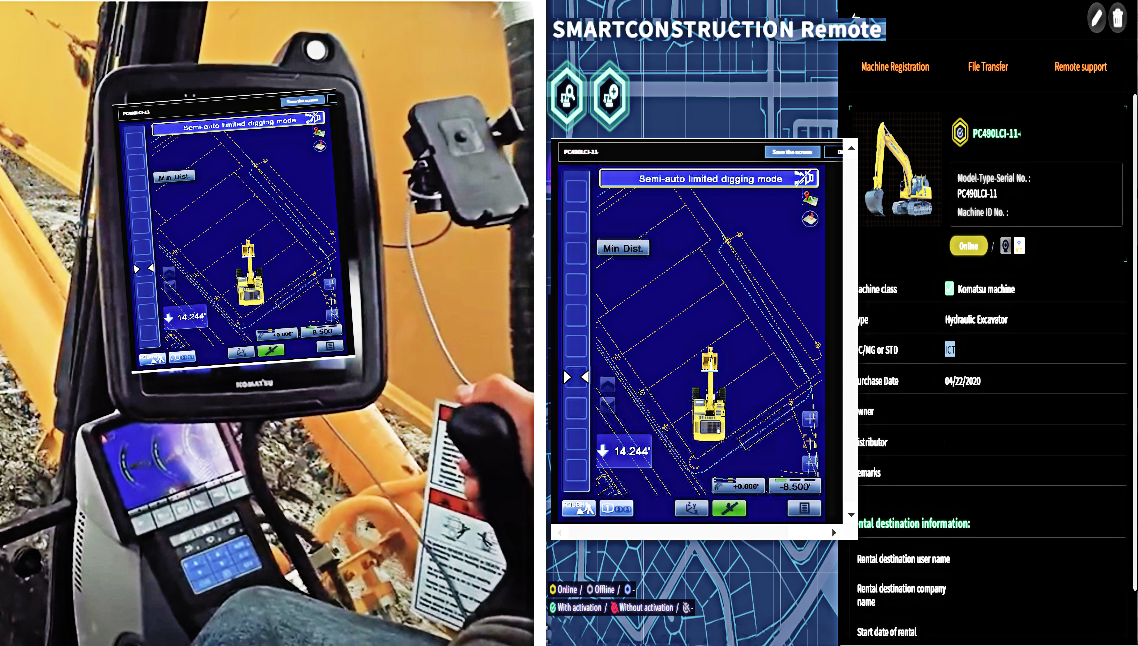2 min read
Komatsu named a Best of CES winner
- Press release,Construction,Company,Surface mining
8 min read

Job site challenges are nothing new, but today’s technology lets you overcome them more quickly. Whether by providing real-time data, tracking productivity, or helping you remotely visualize a job site – implementing some of the latest equipment and management technology can help you advance solutions like never before.
Start Smart
Construction has increasingly become more digital. Building information modeling (BIM) allows various stakeholders to collaborate throughout the course of a project using a 3D model of a site or structure. All parties involved – engineers, architects, contractors and their personnel, project owners – have access to the digital plans. They can all see and track progress and make updates much more quickly than in the old days with paper plans, job site visits and phone calls.
That’s a definite advantage for project managers who may be overseeing multiple jobs and can’t always get to those sites but still need reliable, accurate data and the ability to communicate design changes quickly.
Komatsu already has a suite of Smart Construction customer support solutions designed to help companies digitally transform their operations throughout every phase of a project. Among them is Smart Construction Drone, which provides survey technology that builds an accurate topography of a site safely, quickly and easily.
 “High-precision drone mapping is faster than traditional surveys, so you save time and costs,” said Jason Anetsberger, Komatsu director of customer solutions. “Preconstruction flyovers let you see things you can’t with paper plans. Consistent drone flights throughout a project gives you information about progress across the entire site and assists with progress tracking.”
“High-precision drone mapping is faster than traditional surveys, so you save time and costs,” said Jason Anetsberger, Komatsu director of customer solutions. “Preconstruction flyovers let you see things you can’t with paper plans. Consistent drone flights throughout a project gives you information about progress across the entire site and assists with progress tracking.”
Anetsberger added that Komatsu’s Smart Construction experts can work with you to get a 3D model built and help with drone flight.
"Using Smart Construction Dashboard, you can calculate takeoff quantities for bids, move from 2D to 3D for optimized machine data and eliminate the need for paper plans. The 3D design plans can be uploaded directly into Komatsu’s Smart Construction intelligent Machine Control (iMC) excavators and dozers with the use of Smart Construction Remote, including new iMC 2.0 models that have technology upgrades to further automate earthmoving operations.”
Automate dozing
 A lack of skilled operators is a huge challenge for earthmoving companies right now, but with automation, new operators can become productive faster. Komatsu intelligent Machine Control dozers with automated features enable operators to cut/strip/ from existing terrain, regardless of skill level. The ability to use automatics from first pass to last, instead of just during finish grading, significantly reduces the time is takes to reach target elevation.
A lack of skilled operators is a huge challenge for earthmoving companies right now, but with automation, new operators can become productive faster. Komatsu intelligent Machine Control dozers with automated features enable operators to cut/strip/ from existing terrain, regardless of skill level. The ability to use automatics from first pass to last, instead of just during finish grading, significantly reduces the time is takes to reach target elevation.
Komatsu’s iMC 2.0 dozers with integrated GPS feature proactive dozing control that enables operators to cut/strip from existing terrain, regardless of experience level. This is because the machine’s GPS technology decides on the action of the blade, such as whether to cut and carry, spread or fill or finish grade. The dozer measures the terrain as operators track over it and then uses the data to plan the next pass – which can improve productivity by up to 60% over the previous generation.
iMC 2.0 dozers have additional technology features:
“Remote areas near woods and urban job sites both present problems when it comes to GPS satellite coverage; it gets lost or comes and goes and that slows down production,” said Anetsberger. “Our iMC 2.0 models have dual antennas and added satellite systems that significantly improve coverage and help deliver greater productivity.”
Virtually eliminate over-excavation
For construction companies, over-excavation on trench, footing and basement digs have long been an issue. This leads to extra work and more costly materials to replace what didn’t need to be removed in the first place.
Accurate slope digs and changes in elevation also present challenges. Those are costly in terms of time, surveying, staking, grade checking and the need for multiple machines such as an excavator to get close to grade, and a dozer to finish.
Contractors can significantly reduce such costs using Komatsu iMC 2.0 excavators, because they can dig straight to grade using one machine with integrated GPS and uploaded 3D data models. The latest generation models (PC210LCi-11, PC290LCi-11, PC360LCi-11 and PC390LCi-11) can help improve production by up to 33% and efficiency as much as 63% compared to conventional excavation and grading methods.
“Aimed to quickly lessen the skill gap between new and experienced operators – and improve the bottom line for contractors – our excavators with iMC 2.0 technology can help transform job sites into highly efficient, highly productive operations,” said Komatsu’s Andrew Earing, senior product manager, tracked products.
 Accurate slope digs and changes in elevation present challenges for excavators. Komatsu iMC 2.0 excavators let you dig straight to grade using one machine with integrated GPS and uploaded 3D data models. The latest generation models (PC210LCi-11, PC290LCi-11, PC360LCi-11 and PC390LCi-11) can help improve production by up to 33% and efficiency as much as 63% compared to conventional excavation and grading methods.
Accurate slope digs and changes in elevation present challenges for excavators. Komatsu iMC 2.0 excavators let you dig straight to grade using one machine with integrated GPS and uploaded 3D data models. The latest generation models (PC210LCi-11, PC290LCi-11, PC360LCi-11 and PC390LCi-11) can help improve production by up to 33% and efficiency as much as 63% compared to conventional excavation and grading methods.
iMC 2.0 excavators have unique features such as auto tilt bucket control that automatically aligns the bucket parallel with a slope, so that finish grading can be accomplished without needing to align the machine with the target surface.
Another feature is bucket angle hold control that helps operators reach finish grade quickly and accurately because it automatically holds the bucket angle to the design surface during arm operation, enabling operators to perform finish grading using only arm input.
Earing suggests that users consider adding an optional auto tilt bucket inertial measurement unit for even greater levels of productivity and efficiency. It can be added with a field install kit. “This allows for expanded grading capabilities as well as auto return to horizontal,” said Earing.
Auto tilt bucket and bucket angle hold control are features that build upon the semi-automatic functions that were part of the first generation of iMC excavators, including the ability to switch from manual to semi-automatic modes.
Construction companies can reduce wasted time and the need for expensive fill materials by using another of the machine’s standout features – auto stop control, an exclusive control function that goes beyond simple guidance to semi-automatically limit over-excavation and minimize damage to the design surface. Once target elevation is reached, the machine will follow the design surface to help save time and money.
“Existing and new technology on the iMC 2.0 excavators has proven to increase production and efficiency while reducing costs,” said Earing. “We encourage anyone looking for those attributes to test one for themselves.”
Remotely exchange information
Because job sites often evolve and rarely end up finishing exactly as planned, smart businesses are increasingly performing the task of updating plans digitally and remotely with technology such as Smart Construction Remote.
 Job sites evolve and plans change. Instead of driving to the site to deliver updates, with Smart Construction Remote you can send design changes directly to connected iMC machines. Fleet managers can also remotely support operators and see exactly what they see on the monitor in their machine.
Job sites evolve and plans change. Instead of driving to the site to deliver updates, with Smart Construction Remote you can send design changes directly to connected iMC machines. Fleet managers can also remotely support operators and see exactly what they see on the monitor in their machine.
Now you no longer have to travel to the job site with a USB drive. You can send updates directly to connected iMC machines and field personnel from practically anywhere.
“You can also remotely support operators,” said Anetsberger. “If they have an issue with their machine or a question on the digital plans, Smart Construction Remote lets GPS managers and project managers connect with the machine and see exactly what the operator does on their monitor. That eliminates a trip, saving time and money.”
Getting updates from the job site is more convenient too with Smart Construction Field, which can eliminate the wait for phone calls or field personnel to drop off information. It allows you to track job site activities digitally and aggregate personnel, machine and material costs to compare progress status in terms of costs and schedule.
 Jason Anetsberger, director of customer solutions, Komatsu
Jason Anetsberger, director of customer solutions, Komatsu
“These solutions, along with others, increase efficiency and help you make faster decisions and adjustments that can affect production and profitability,” said Anetsberger. He added that adopting new technology should not be intimidating. “Your local Komatsu distributor can help you get started with these solutions. They are simple to use, and a good first step in adopting technology.”
See your fleet data anytime, anywhere
Fleet managers know the challenges of getting the information they need to maintain machinery and make important decisions related to service. What if all the utilization data, parts ordering capabilities, service manuals and more were available in one platform?
“My Komatsu enables users to access and evaluate their assets,” said Komatsu’s Gabe Saenz, digital experience manager. “It can save countless hours of trying to track down machine information and help you be more proactive about service and repairs, when to order parts and other critical factors related to fleet management.”
Much of the information needed to make those fleet management decisions is available via Komtrax telematics that can be accessed through a My Komatsu account. Komtrax data includes machine utilization, fuel consumption and idle time.
“One of a fleet manager’s biggest challenges when they are not on-site is knowing how many equipment hours are due to idle time versus production,” said Salvador Davalos, Komtrax systems administrator. “Excessive idle time is a huge waste of fuel, and with the high cost of diesel it’s critical to conserve as much as possible.”
My Komatsu provides access to Komtrax telematics data, so fleet managers can instantly access a machines’ idle percentages and see if they are beyond stated goals that have been set. They can then address that with operators and field personnel remotely, or in person.
“Fleet managers can show operators ways to reduce idle time such as shutting a machine down during lunch or when there is a long stretch between production times,” said Davalos. “Any cut in fuel costs increases profitability. Setting an alert that notifies you when a machine has exceeded its idle percentage goal, provides the information right away without needing to log in to My Komatsu.”
For more information about Smart Construction solutions, My Komatsu, Komtrax and iMC 2.0 dozers and excavators, contact your (distributor) representative or branch and visit www.komatsu.com